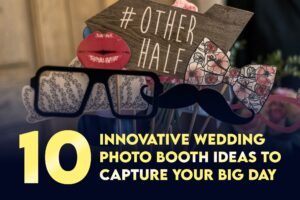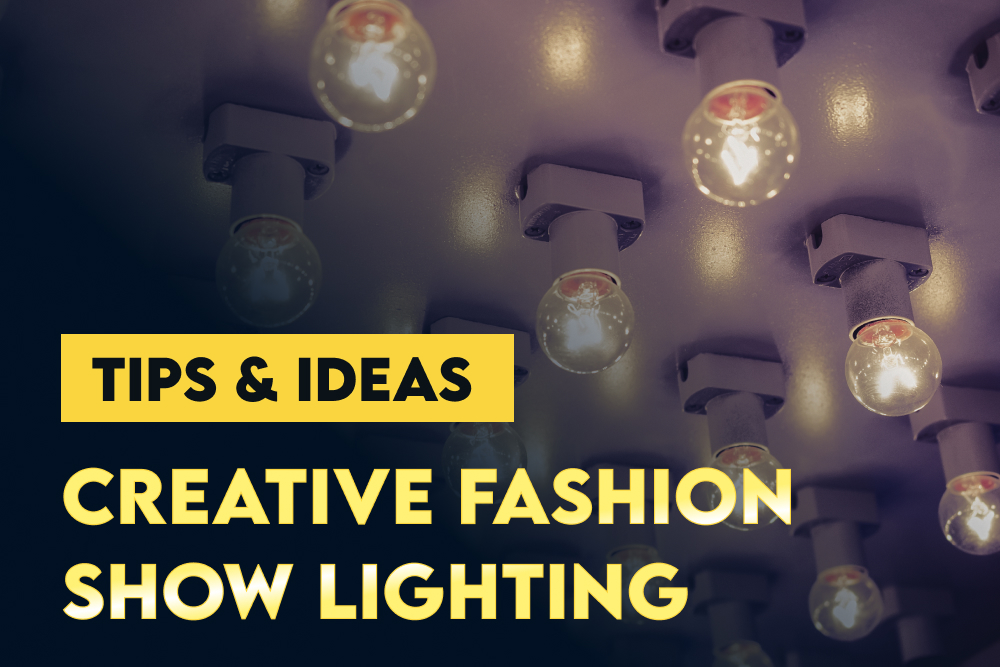

Head of HR at Rent For Event

Head of HR at Rent For Event
In fashion show lighting, the interplay of light and shadow accentuates the beauty of apparel. Moreover, the right lights add drama to the runway and set the stage for an unforgettable experience.
In this article, we’ll take you through the importance of fashion show lighting and the key considerations to remember. Let’s go!

The significance of lighting in a fashion show cannot be overstated. Beyond mere illumination, it shapes the overall mood and ambiance, making it a crucial aspect of any successful show.
Effective lighting elevates the garments, creating visual interest and drawing attention to each fashion piece as it struts down the catwalk.
In the world of fashion, setting the right mood and ambiance is essential to:
Fashion show lighting plays a pivotal role in achieving this goal. By adjusting brightness levels and color temperatures, you can create a variety of atmospheres.
You can choose to have a sophisticated and glamorous show to something that’s more edgy and avant-garde.
A fashion show is a visual spectacle. As such, the lighting must be choreographed to highlight the most critical aspects of the event — the fashion pieces themselves.
Properly executed lighting directs the audience’s focus to the garments, enhancing the designer’s vision and craftsmanship. Illuminate the runway strategically to showcase the intricate details and unique features of each garment. This way, you can leave the attendees in awe of the artistry and creativity on display.
Beyond practical illumination, lighting in a fashion show is an art form that enhances the overall experience for the attendees. Playing with light and shadow adds an artistic dimension to the show, creating visually captivating scenes.
A well-executed lighting design is an integral part of the show’s success.
Before diving into the dazzling world of fashion show lighting, you must engage in thorough pre-event preparation. This phase lays the foundation for a seamless and awe-inspiring lighting display.
Here’s a step-by-step guide to ensure your fashion show lighting preparation is nothing short of stellar:
Begin by defining your vision for the fashion show. Consider these questions:
Understanding the overall concept helps shape the lighting design and ensures it aligns with your artistic goals and brand identity.
Collaboration is the key to success in the realm of fashion show lighting. Work closely with experienced lighting specialists and designers, like the team from Rent for Event. These professionals have a track record of creating mesmerizing visual experiences.
Their expertise will guide you through the technical aspects, and their creative insights will elevate your lighting design to new heights.
Each venue comes with its own set of limitations and possibilities when it comes to lighting. Make sure to visit the location and familiarize yourself with the:
Understanding these factors will help you plan the placement and type of lights required for the best results.
Don’t wait until the day of the event to test your lighting design. Schedule rehearsals and technical run-throughs with models to see how the lighting interacts with their movements and the garments.
Additionally, adjust as needed to ensure that the lighting enhances the fashion pieces and creates captivating visuals.
Safety should be a top priority in your pre-event preparation. You must ensure that all electrical connections and fixtures are secure and meet safety standards.
Moreover, develop contingency plans for any potential technical glitches or power outages to minimize disruption during the show.
Stay up-to-date with the latest lighting technologies and innovations in the industry. LED lights, for example, provide versatility and energy efficiency, allowing for a wide range of colors and effects.
Embracing technology can elevate your lighting design and set your fashion show apart from the rest.
Plan your pre-event preparation timeline carefully. You have to give yourself enough time to address any unforeseen challenges that may arise.
When you have ample time for preparation, you ensure that you can fine-tune the lighting design and achieve the desired results.
As you make progress in your pre-event preparation, revisit your initial vision and concept. Be open to revisions and adjustments based on feedback from the lighting specialists, designers, and rehearsal observations. As a result, you can achieve a polished and captivating lighting display.
There are some technical factors to consider for fashion show lighting, such as:
Strategically position lights along the stage or catwalk to avoid unflattering shadows and maintain consistent lighting on the models. Experiment with various angles during rehearsals to find the most flattering positions for the models as they showcase the garments.
The choice of color temperature can drastically alter the mood of the show. Warm colors evoke intimacy and elegance. Meanwhile, cool colors create a contemporary and futuristic ambiance.
Experiment with color effects, such as gels and filters, to make the show stand out and align with the designer’s vision.
To create a mesmerizing visual experience, incorporate moving lights and dynamic effects. Moving lights can follow models down the runway, drawing attention and enhancing the overall theatrical experience. Consider using haze or fog machines to add an ethereal touch to the runway, creating an otherworldly ambiance.
Here are some catwalk lighting techniques you can use for your fashion show:
At the heart of every fashion show is the model, the living canvas that brings the designer’s creations to life. Use spotlights to follow models down the catwalk, creating a focal point and emphasizing their presence.
Proper high-intensity runway lights ensure that each model becomes the center of attention as they confidently strut the runway.
Of course, don’t forget runway edge lights on the side of the runway and runway centerline lights. These lighting options can create a precision approach path and add dimension to your show.
Selecting the right runway light colors is an art that can significantly impact the presentation of fashion pieces. The choice of colors should complement the clothing being showcased while maintaining cohesiveness with the overall theme of the show.
Neutral colors work well for a classic look. Meanwhile, bold colors can add drama and flair, making the garments pop on the runway.
The design of your catwalk stage is also a crucial factor to consider:
Creating visual interest and depth on the catwalk is essential to keep the audience engaged. Determine the right runway length. Afterward, Incorporate elevated platforms to add dimension to the models’ appearance and provide a dynamic range of lighting angles.
Add creative backdrops and props that interact with the lighting to add texture and context to the fashion pieces. Props can serve as additional focal points, enhancing the overall visual experience. Plus, they can easily make the runway a work of art in itself.
Now, it’s time for some tips on how to make the most out of your catwalk lighting:
To create a multidimensional effect, combine various light sources. Use ambient, accent, and spotlighting together to highlight different aspects of the show. Layering lights add depth and sophistication, elevating the overall visual impact of the fashion show.
Achieving the right balance between light intensity and shadow play is crucial to create visually appealing scenes. Experiment with different light intensities during rehearsals to ensure that the models are well-lit. Additionally, ensure that the garments’ details are showcased to their full potential.
A fashion show is a synchronized performance, and the lighting should work in harmony with the music and choreography. Coordinate lighting cues with the rhythm and mood of the music, accentuating the models’ movements and the flow of the show.
Mastering the art of fashion show lighting requires a keen understanding of the essential elements. It is a delicate dance of creativity and technical prowess that transforms the runway into a captivating stage of beauty and inspiration.
By embracing the power of light, designers can elevate their fashion shows to new heights. As a result, you can leave a lasting impression on the runway and beyond.